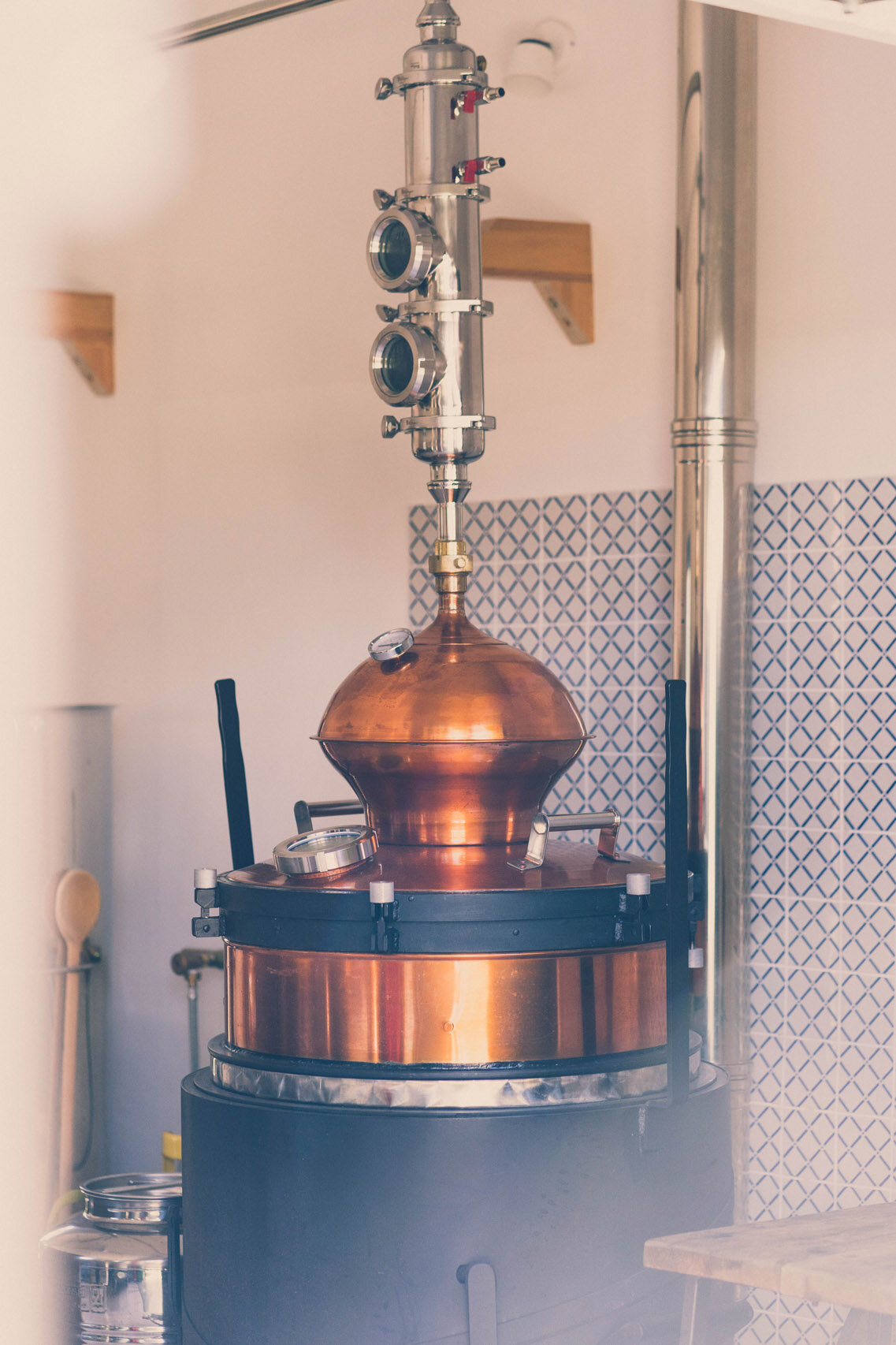Možeš li nam opisati o kakvom se kotlu radi? Je li to u potpunosti tradicionalni rakijski kotao?
Naručili smo tradicionalni bakreni kotao, koji iako izgleda kao običan rakijski kotao ipak ima neke preinake koje je Tomislav izradio prema mojim idejama, a koje su ga učinile pogodnijim za modernu izradu gina i finih destilata. Hladnjak koji se tradicionalno kuje od bakra je po mojoj želji izradio od inoxa, jer bakreni hladnjak može oksidirati i tako promijeniti okus destilata koji izlazi iz kotla. Razlog zašto su se kotlovi tradicionalno izrađivali od bakra je taj što se radi o materijalu koji je podatan za obradu i svaki kovač iz prošlosti mogao je s njime lako raditi. Bakrena glava našeg kotla veća je nego što je to uobičajeno u našim krajevima- to je dio u kojem se skupljaju alkoholne pare, a njegovim povećavanjem minimalno smo povećali refluks i tako dobili čišći destilat, a da nismo izgubili arome i okuse, što je važno u proizvodnji gina. Naručili smo i duplo dno ispunjeno uljem, kako bismo spriječili zagorijevanje smjese u kotlu. Jednom kada kotao zagori, vrlo je teško riješiti se tog mirisa, koji se onda prenosi i na destilat- a to smo svakako željeli izbjeći. Malo okno ugrađeno je kako bismo mogli vizualno provjeravati smjesu koja se kuha u kotlu. Za proizvodnju gina koristimo jednostavne parovodne cijevi jer želimo zadržati što je moguće više okusa i aroma, ali za proizvodnju voćnih rakija, koristimo refrakcijski stup (naručen od jednog australskog proizvođača) koji radi dvostruku destilaciju čime okus postaje profinjeniji. Osim toga, ovo je potpuno analogan kotao, bez elektronike- što je dobro, jer jednom kada naučiš raditi na njemu, on je vrlo pouzdan alat.
Can you explain your still a bit? Is it a completely traditional pot still?
We ordered a traditional copper pot still, and even though it looks like a classic still for making rakija, there were some tweaks that Tomislav made by our request, that made our still apt for modern gin and fine spirits production. He made the cooler out of stainless steel because the traditional copper cooler can oxidize and thus change the taste of the spirit that comes out of the still. The reason the stills were traditionally made out of copper is that it is easier to work with than the stainless steel, and every village blacksmith from the past could work with copper. The copper head on our still is bigger than usual in these parts- this is the part where evaporating alcohol gathers, and by increasing it we minimally increased the reflux, and got cleaner distillate without losing flavor and aromas, which is important in gin production. We also ordered the double bottom filled with oil that keeps the mash from burning. Once burned, the smell sticks to the still and can change the taste of the distillate, and we definitely wanted to avoid that. A small round-looking glass was installed so we can keep an eye on the liquid that is cooking inside. For the gin, we use a simple column and a lyne arm, as we want to keep as much flavor as possible, but in the production of fruit brandies, we use the fractionating column (ordered from an Australian producer), where double distillation is done, and the taste that comes out is more refined. Otherwise, it is a complete analog still, without the electronics- which is good as once you get to know its characteristics, it is a very reliable still.




